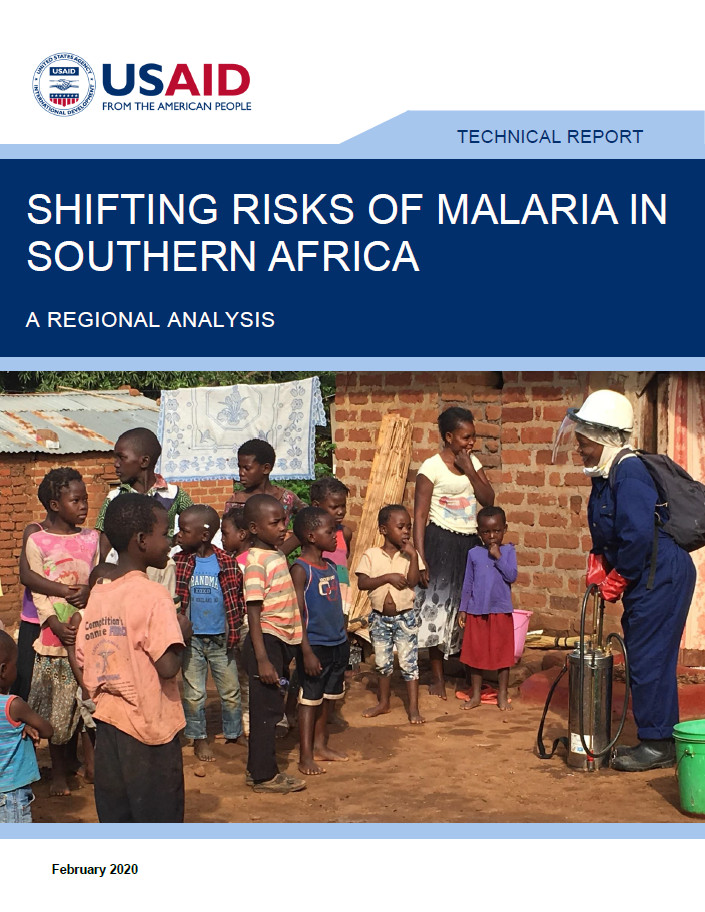
RYAN – SHIFTING RISKS OF MALARIA IN SOUTHERN AFRICA – A REGIONAL ANALYSIS
Sadie Ryan, Anna Steynor, Chris Jack, Piotr Wolski, Lisa van Aardenne, Chris Lennard, and Fernanda Zermoglio
Article first published online: 1 FEB 2020 USAID Technical Report
EXECUTIVE SUMMARY
Temperature impacts both the life cycle and habitat of malaria-carrying mosquitoes (genus Anopheles) and malaria parasites. Warmer temperatures may result in new locations becoming suitable for malaria transmission, while currently suitable locations may become too hot, leading to reductions in malaria’s seasonal duration and overall risk. This report analyzes the shift in malaria transmission suitability based on projected temperature rise over two time periods: short and medium term (2030s and 2060s); under two climate pathways: best-case and worst-case (Representative Concentration Pathways [RCP] 4.5 and 8.5); and two climate models (less hot and hotter), and critically the change in the number of people at risk.
CONTEXT
Climate variability and change present both current and future risks to human health. For example, changes in temperature, precipitation, and extreme weather events alter the geographic range, seasonality, and survival of pathogens and the vectors that transmit them. Similarly, extreme weather events, such as floods, heat waves, and droughts, put at risk health infrastructure necessary to reduce disease transmission (e.g., health centers, supply chains). Knowledge of how, when, and under what circumstances climate variability and change impact health outcomes is limited, especially in sub-Saharan Africa. Region-specific information on climate science and projections of future climate are also limited. In this report, we describe an analysis of climate-induced malarial transmission risk for the Southern Africa region, using a set of regionally calibrated climate models, to better capture the impact of climate variability and change on malaria risk.
Read the full USAID Technical Report